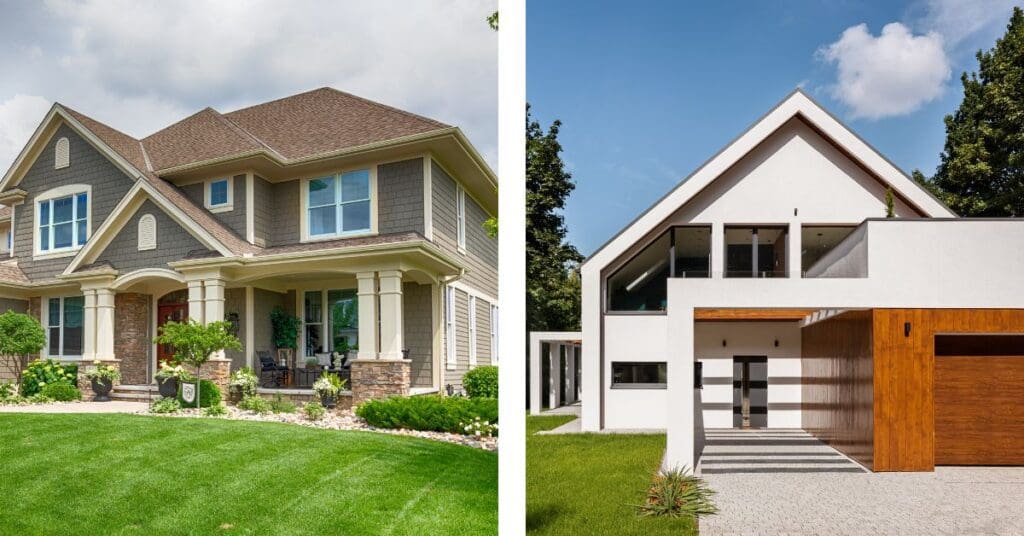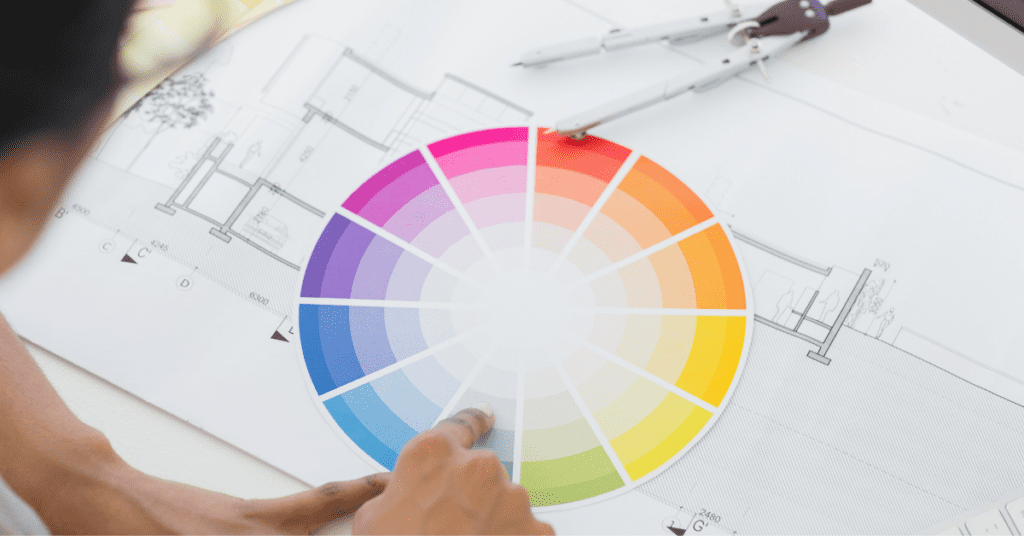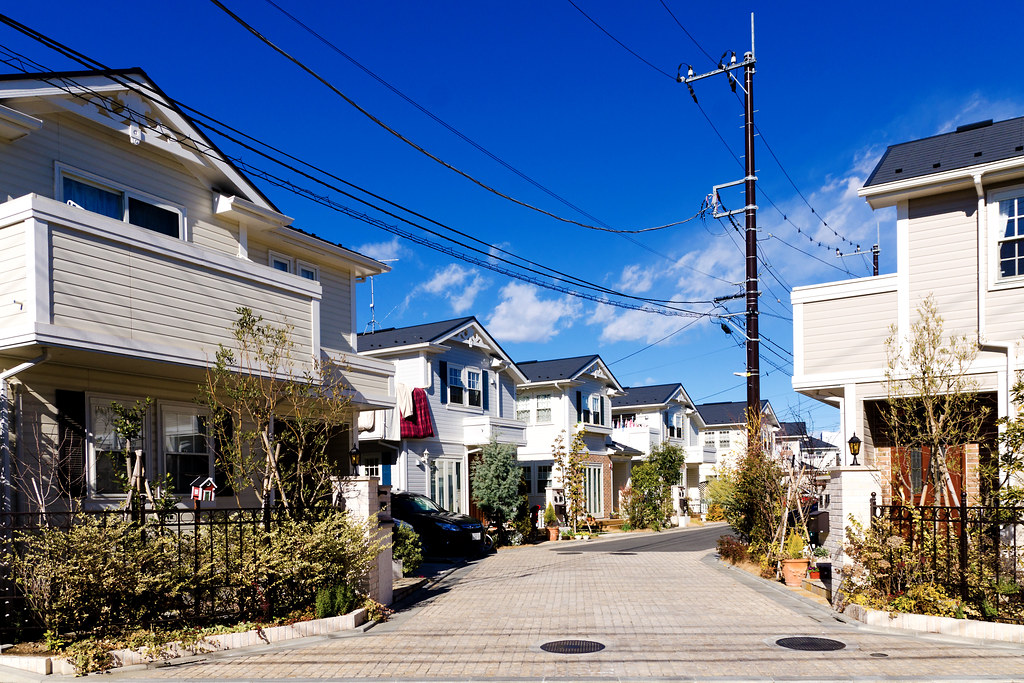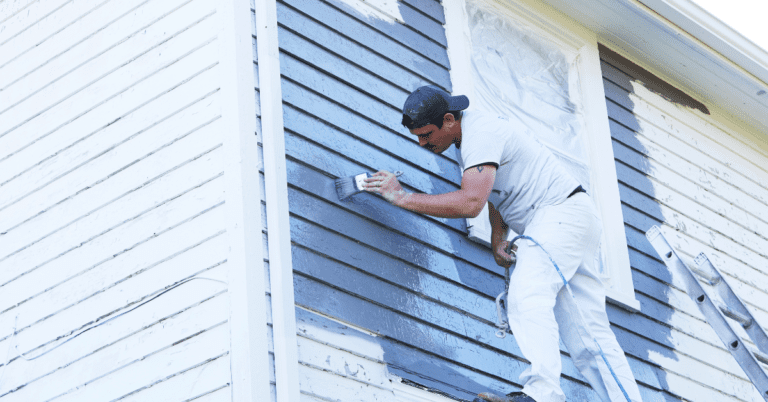When it comes to enhancing the overall appearance of your home, painting the exterior can make a significant difference. Not only does a fresh coat of paint add curb appeal, but it also offers protection against the natural elements. However, to achieve the desired results, homeowners must consider various factors such as colour selection, paint type, finish, and safety precautions.
If you’re wondering whether to paint the trim or walls first, check out our article on When Painting, Should You Paint Trim or Walls First for valuable insights. In this article, we will explore all these aspects to help you transform your home’s exterior while adding value and curb appeal.
For a more affordable option, latex paint is a popular choice. It is easier to apply and clean up because it is water-based. Latex paint also dries quickly and has similar temperature-related expansion and contraction properties as acrylic paint. When selecting latex paint for your exterior project, ensure that it is specifically designed for outdoor use.

How Should I Choose for My Home’s Exterior Colour?
1. Identify Your Home’s Style and Neighbourhood:
Before selecting a colour for your home’s exterior, it is important to consider the architectural style of your house and the neighbourhood it is located in. Different styles often have specific colour schemes that complement their design. Additionally, the colour should harmonize with the surrounding houses, so it doesn’t stand out in a negative way.
2. Become a House Colour Copycat:
If you’re uncertain about the best colour for your home’s exterior, take inspiration from houses in your neighbourhood that catch your eye. Pay attention to the colour combinations and see how they blend with the overall look and feel of the neighbourhood.
3. Don’t Get Caught Up in Trends:
While it may be tempting to select the latest colour trend for your home, it is important to remember that trends come and go. Opt for timeless colours that will continue to look appealing for years to come. Neutral tones such as beige, gray, and cream are always a safe choice.
4. Look to Your Home for Guidance:
Sometimes, the best way to choose a colour is to let your home guide you. Consider your existing elements such as the roof, bricks, stones, or any other permanent fixtures. To ensure the chosen paint colours harmonize with your home’s overall look, it’s helpful to test them out beforehand. Learn how to test paint colours effectively by reading our article on How to Test Out Paint Colours Before Painting Your Home. The colour you choose should complement these elements rather than clash with them.
A tip from our friend, Vantage Roofing Ltd., a reputable roofer in Delta, matching the color of your siding and fascia boards with your roof is also important. For example, if you have a black metal roof, then perhaps you can go with a more contemporary colour theme. If you have a cedar shake roof, then perhaps a more rustic and warm color theme is better for your property.
5. Rely on Colour Wheel Rules:
Understanding the basics of colour theory can help you create a visually pleasing exterior colour scheme. Complementary colours, which are opposite each other on the colour wheel, can create a harmonious combination. Analogous colours, which are next to each other on the colour wheel, can create a more subtle and cohesive look.

6. Whatever You Choose: Test, Test, Test!
Before committing to a colour, it is crucial to test it on a small area of your home’s exterior. Factors such as lighting and surrounding colours can affect how a colour appears. Testing a few samples will help you make an informed decision and ensure that the final result meets your expectations.

What Kind of Paint Should I Use?
When it comes to selecting the right paint for your home’s exterior, there are several options to consider. Each type of paint has its own benefits and is suitable for different surfaces. However, if you’re also planning to paint the interior of your home, it’s important to understand the different types of interior paint available. Explore our comprehensive guide on The Different Types of Interior Paint to choose the right paint for your interior projects.
1. Acrylic:
Acrylic paints are known for their durability and long-lasting finish. They are made with high-quality ingredients that make them thick and viscous. The elasticity of acrylic paint allows it to expand and contract with temperature fluctuations, making it ideal for exterior painting projects. Use acrylic paints on siding made from wood, aluminum, or fiber cement. They also work well for covering stucco, plaster, and drywall.
2. Latex:
For a more affordable option, latex paint is a popular choice. It is easier to apply and clean up because it is water-based. Latex paint also dries quickly and has similar temperature-related expansion and contraction properties as acrylic paint. When selecting latex paint for your exterior project, ensure that it is specifically designed for outdoor use.
3. Oil-Based:
While less commonly used today due to health restrictions, oil-based paints still have their advantages. They are ideal for certain exterior painting projects as they shrink less than latex and acrylic paints, making them suitable for high-traffic areas. Oil-based paints create a smooth, hard surface and work well on porch floors, doors, trim, and other small details. However, they are more likely to crack and fade over time, and they are difficult to clean due to their oil-based nature.
What Paint Finish Will Provide the Best Protection?
The right paint finish can enhance the aesthetic appeal of your home’s exterior while providing the necessary protection against the elements. If you have stucco surfaces, it’s important to take specific maintenance steps to keep them in optimal condition. Discover our Summer Maintenance Tips for Stucco to ensure your stucco surfaces look their best. Here are some common paint finishes to consider:
1. Flat or Matte Finish:
Flat or matte finish paints have a solid, non-reflective appearance. They are ideal for painting older houses as they can easily hide imperfections. However, flat paints are less durable and are not suitable for high-traffic areas such as doors, windows, and floors. Use flat paint for painting exterior siding.
2. Satin Finish:
Satin finish paints, also known as eggshell or low-luster, are popular among homeowners. They have a moderate shine that works well on wood or cement siding in good condition. It is important to mix satin finish paint thoroughly before application to achieve a consistent sheen.
3. Semi-Gloss and Glossy Finish:
Semi-gloss and glossy finishes are shinier than satin and flat paints, making them more durable and easy to clean. These finishes are suitable for trim that is exposed to the elements, including window sills and garage doors. Semi-gloss paints are less shiny than glossy paints and are ideal for doors and trim work. High gloss finishes attract attention and should be avoided on surfaces with imperfections.
What Are the Advantages of Painting the Exterior of My Home?
Painting the exterior of your home offers several advantages:
- Enhances its value: A fresh coat of paint can significantly increase the value of your home.
- Protects from natural elements: The paint acts as a protective barrier against weather conditions, including sun exposure, rain, and snow.
- Repairs damage: Painting can help you identify and address any existing damage to your home’s exterior. For instance, if tree branches have scratched or damaged the exterior, consulting a professional arborist can ensure that trees are pruned and maintained to prevent further issues.
- Choose new trends: Painting provides an opportunity to update the look of your home and incorporate current design trends.
- Prevents staining and peeling: A good paint job protects your home from stains, peeling, and other signs of wear.
- Helps siding and trim last longer: Regularly painting your home’s exterior can extend the lifespan of siding and trim materials. Similarly, if you’re considering wallpaper installation for your interior walls, you may wonder whether to hire a professional. Learn about the benefits of hiring professionals and when it makes sense to do so in our article on Should I Hire Someone to Do the Wallpaper.
- Makes your home look extraordinary: A well-painted home stands out and adds charm to the neighborhood.
- Improves indoor air quality: High-quality exterior paints can improve indoor air quality by reducing the presence of pollutants.
- Keeps moisture out: A proper paint job helps prevent moisture from seeping into your home’s structure.
- Extends paint life of the home: With regular maintenance and touch-ups, a well-painted exterior can last for many years.
Conclusion
Adding curb appeal to your home starts with a well-planned exterior painting project. By carefully selecting colours, paint types, finishes, and taking safety precautions, homeowners can transform their homes into stunning, eye-catching properties. Whether you decide to tackle the project yourself or hire professionals, the end result will not only enhance the appearance of your home but also protect it from the elements and increase its value. So, give your house the curb appeal it deserves and be proud of your beautifully painted home. Remember, proper painting preparation is crucial to achieve the best results. Discover the consequences of skipping painting prep and why it’s essential in our article on What Happens When You Skip Painting Prep.
Are you ready to transform your home’s exterior with a fresh coat of paint? Our team of professional Maple Ridge painters, Langley painters, Richmond painters, New Westminster painters, West Vancouver painters, North Vancouver painters, Port Coquitlam painters, Coquitlam painters, Port Moody painters, Surrey painters, Burnaby painters, Vancouver painters, or any surrounding areas, our skilled painters are equipped to handle your project with precision and expertise. Visit our city-specific pages to learn more about our services in your area and get in touch with us today for a free consultation and estimate. Let us bring your vision to life and create a stunning, eye-catching home you’ll be proud of.

